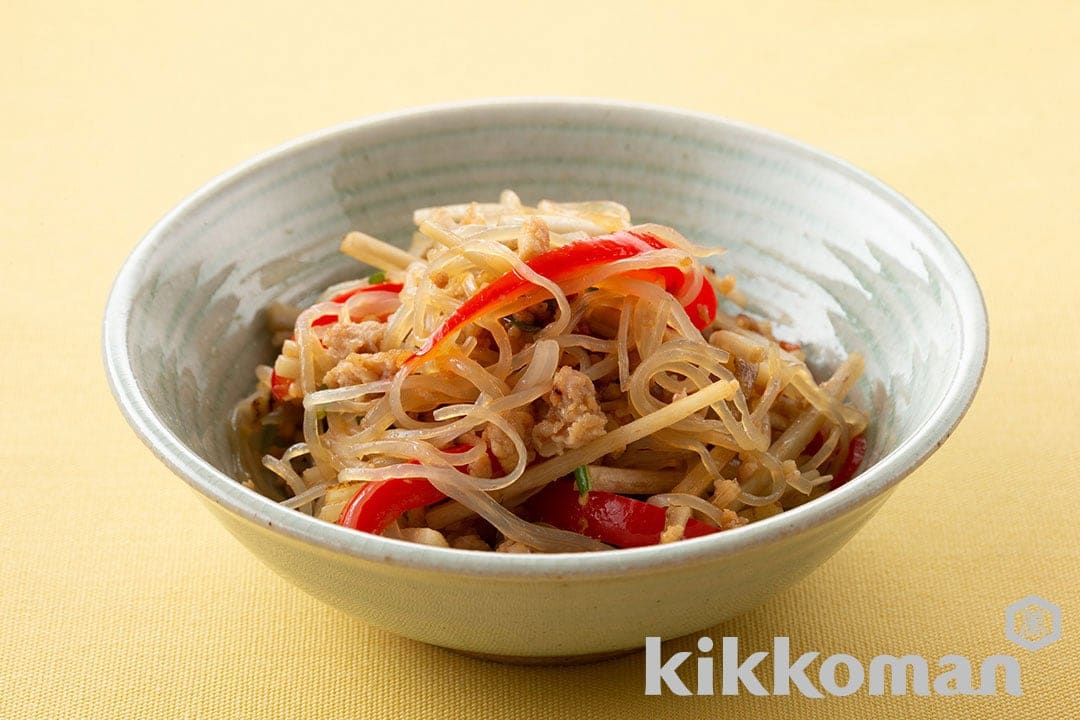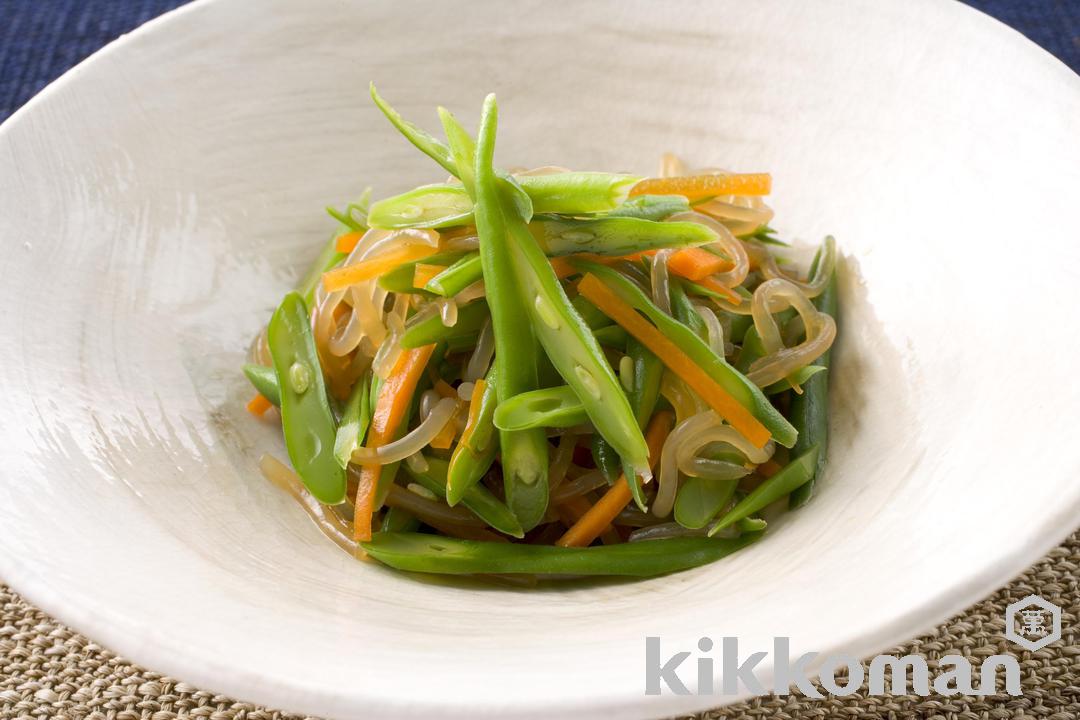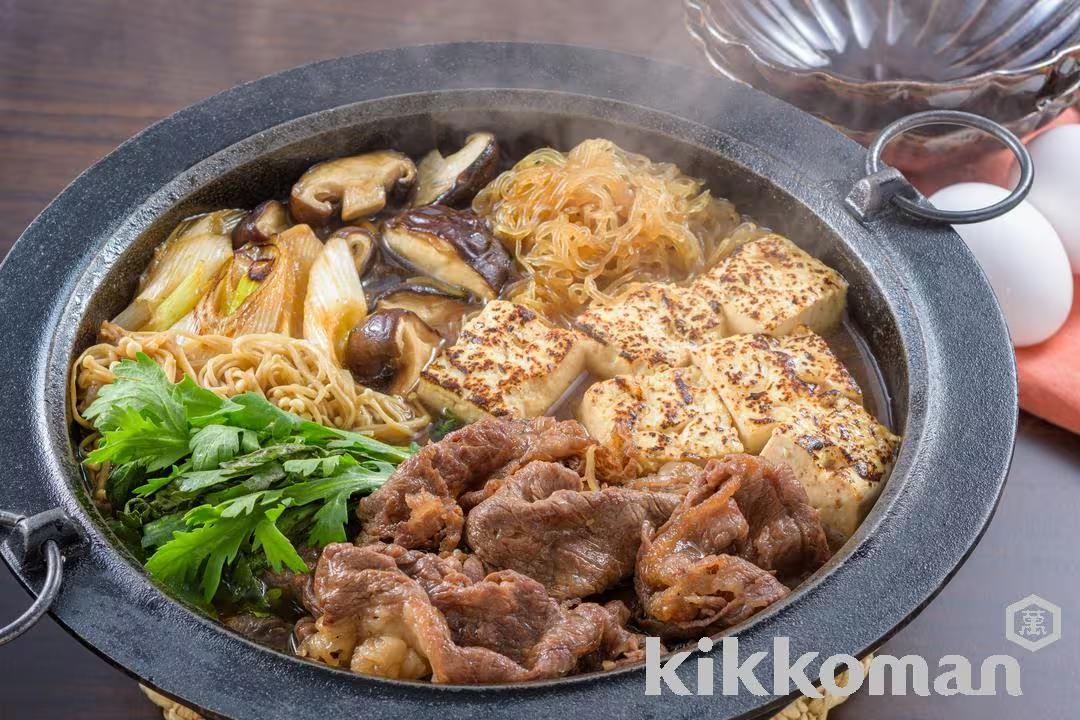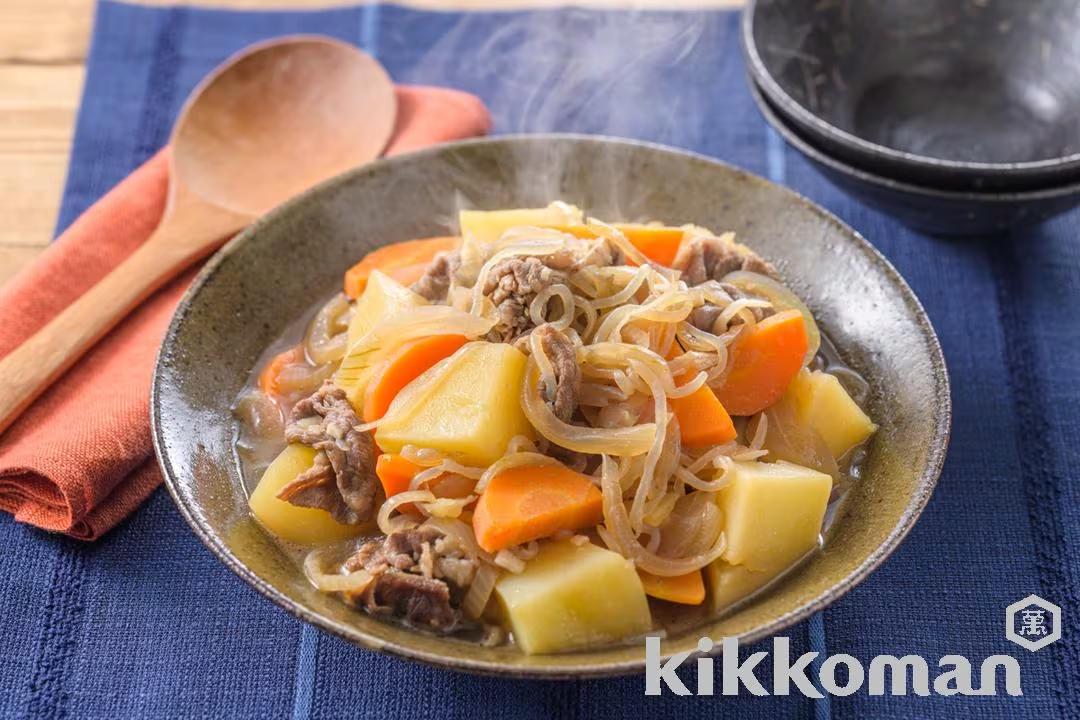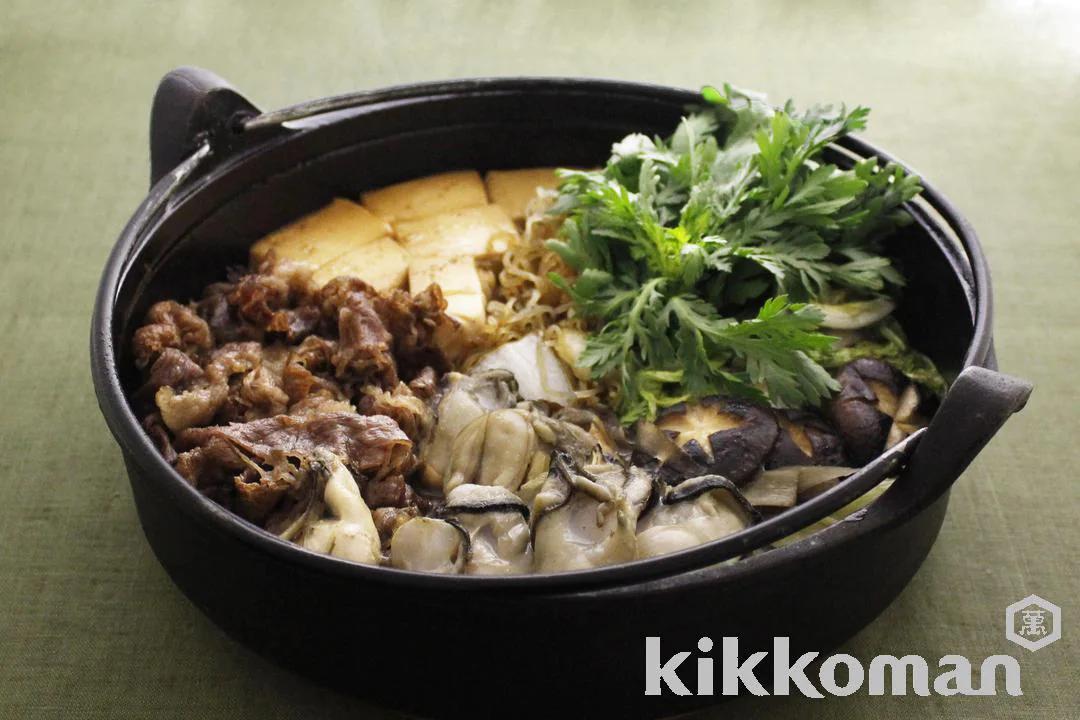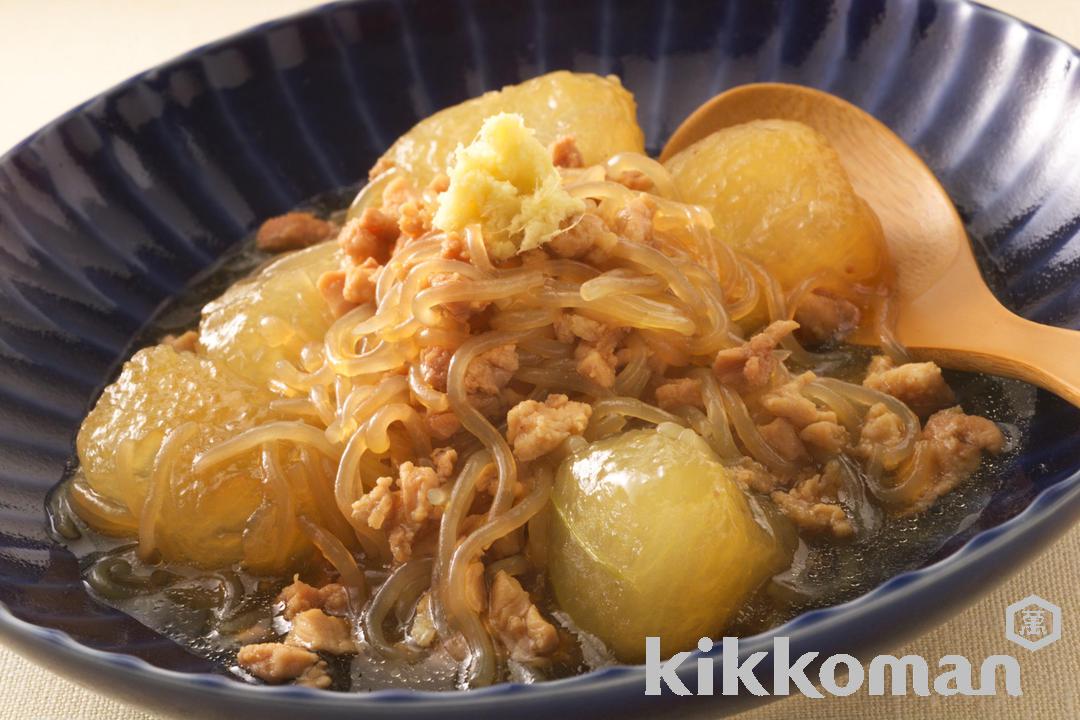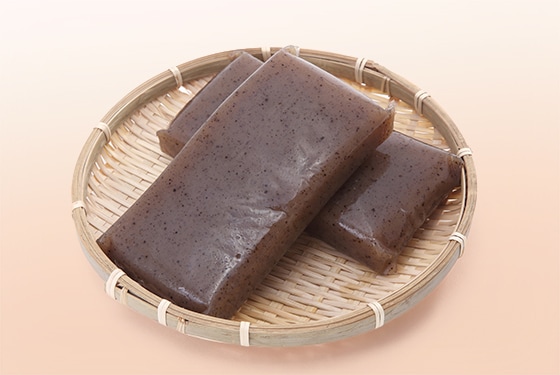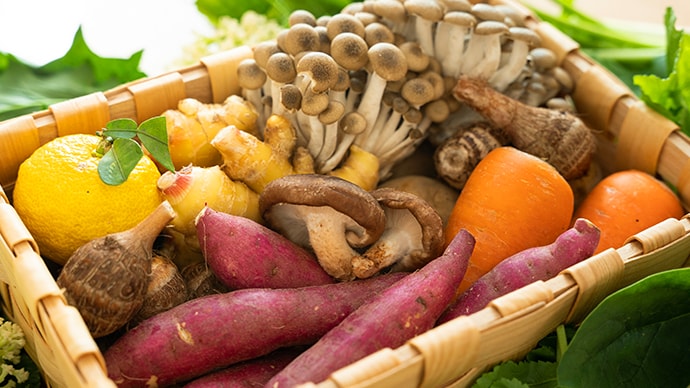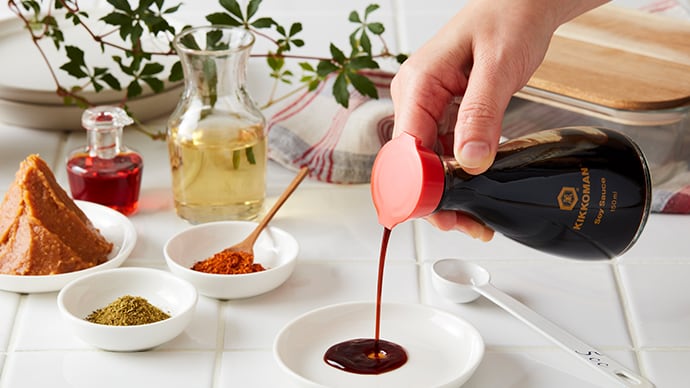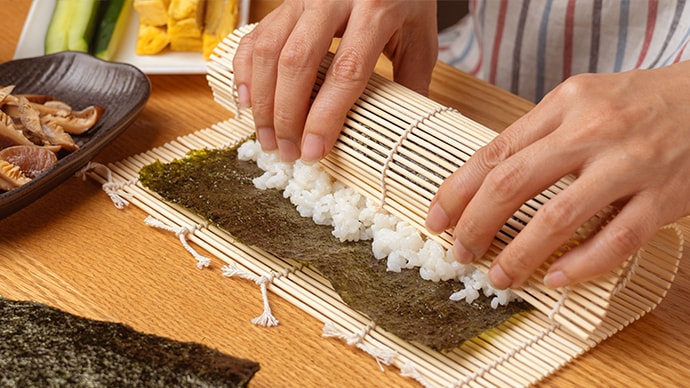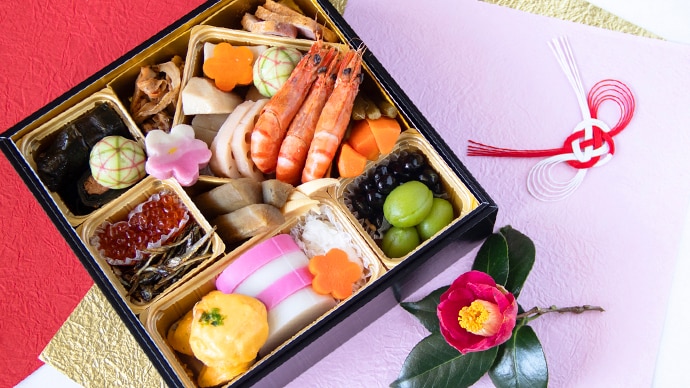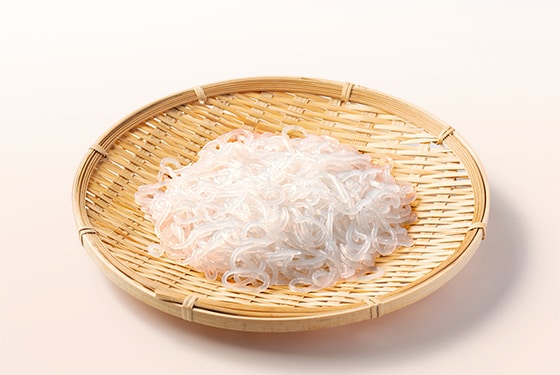
Translucent white, thin konnyaku / yam cake noodles used for the Japanese hot-pot sukiyaki and other simmered dishes
What are shirataki noodles?
Shirataki noodles (しらたき in Japanese) are slender threads of konnyaku / yam cake. Made by taking the main ingredient of powdered konnyaku, adding a coagulant, then threading the mixture through specialized tubes and boiling until firm. As it is primarily made of dried white powdered konnyaku, the noodles are also white in color.
Generally eaten in dishes such as "oden" (a Japanese hot-pot variety using various ingredients and eaten in winter), sukiyaki, and "nikujaga" (beef and potato stew). These are also used as a substitute for pasta or other noodles in the case of calorie restriction for weight loss. Shirataki noodles are sometimes bundled together to simmer for easier eating, a method often used for oden.
Shirataki noodles should be prepared before cooking to remove its distinct odor and allow for seasonings to be soaked up.
To prepare the noodles, first sprinkle on salt, rub in, then set aside for some time to allow excess moisture to drain out. Finish by parboiling in hot water for 3-5 minutes.
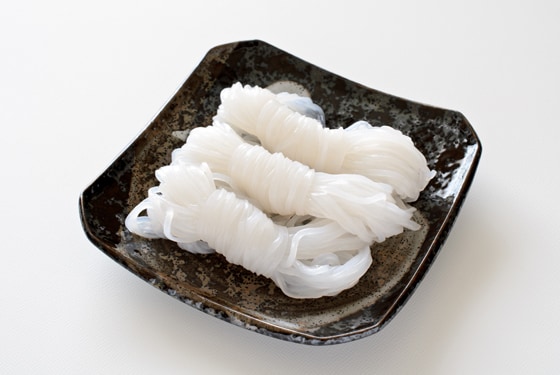
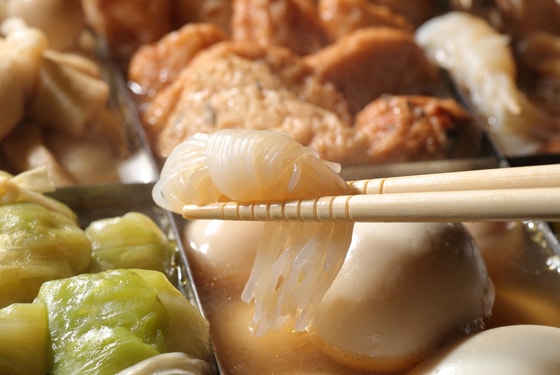
Nutrition facts
Shirataki noodles are about 97% water, so they are very low in calories, at about 7 kcal per 100g. They are also made using calcium as a coagulant, so it contains calcium. Shirataki noodles are rich in dietary fiber, which helps to eliminate waste products from the body. Konnyaku yam, the raw material used to make shirataki, contains a lot of soluble dietary fiber called glucomannan, which changes to insoluble dietary fiber during the gelatenization process of making the noodles. Shirataki is low in calories, so it can increase the fillingness of dishes while reducing total calorie intake.
The calcium in shirataki noodles can be absorbed more efficiently when eaten with mushrooms and fish, which are rich in vitamin D, or spinach, which is rich in vitamin K and vitamin C. Therefore, sukiyaki is a dish with a great combination of ingrdients for the calcium absorption in the body; in sukiyaki, shirataki is often combined with beef, shiitake mushrooms, and shungiku / chrysanthemum leaves.
Storage to prevent food loss
Consumption soon after purchase is recommended. If package storage directions state to keep out of direct sunlight and away from high temperatures, then it is possible to store the noodles without refrigerating. Leftover shirataki noodles should be placed in a container, submerged fully in water, then sealed and placed in a refrigerator. Avoid freezing as that will change the texture of the noodles.
Trivia
It is said that the Japanese word for shirataki noodles comes from the process of making the noodles. The konnyaku strands coming out of the holes in the tubes look like a "white waterfall," which is the literal translation of the word "shirataki."
Related Recipes
30min
252kcal
600mg
25min
131kcal
700mg


